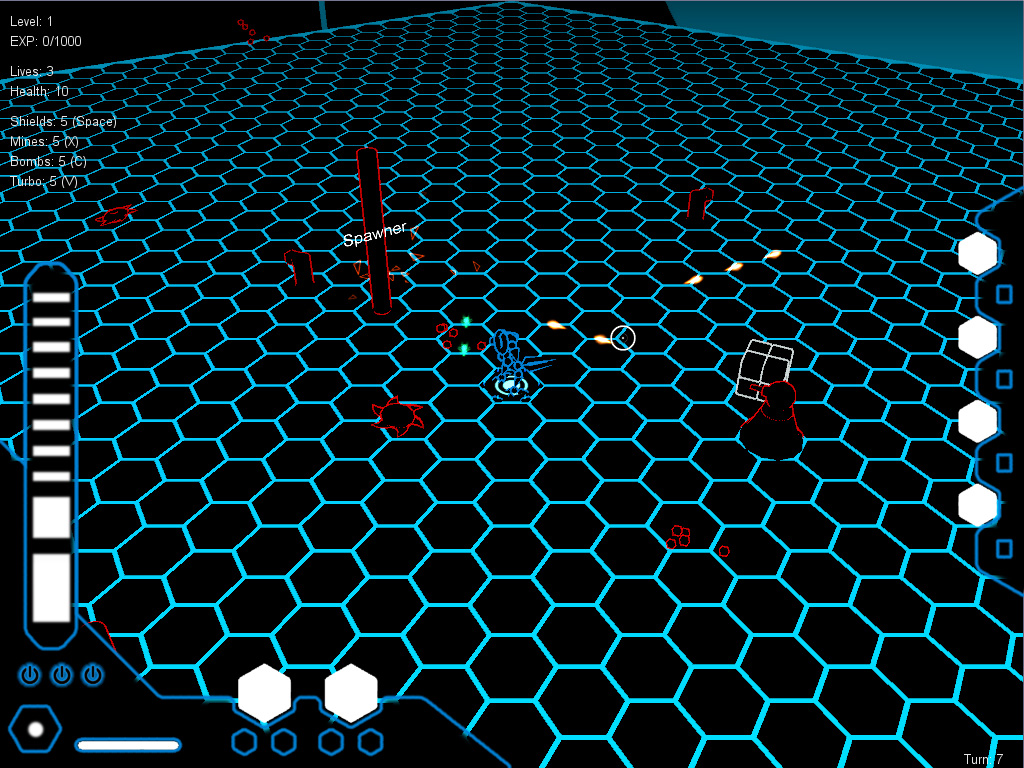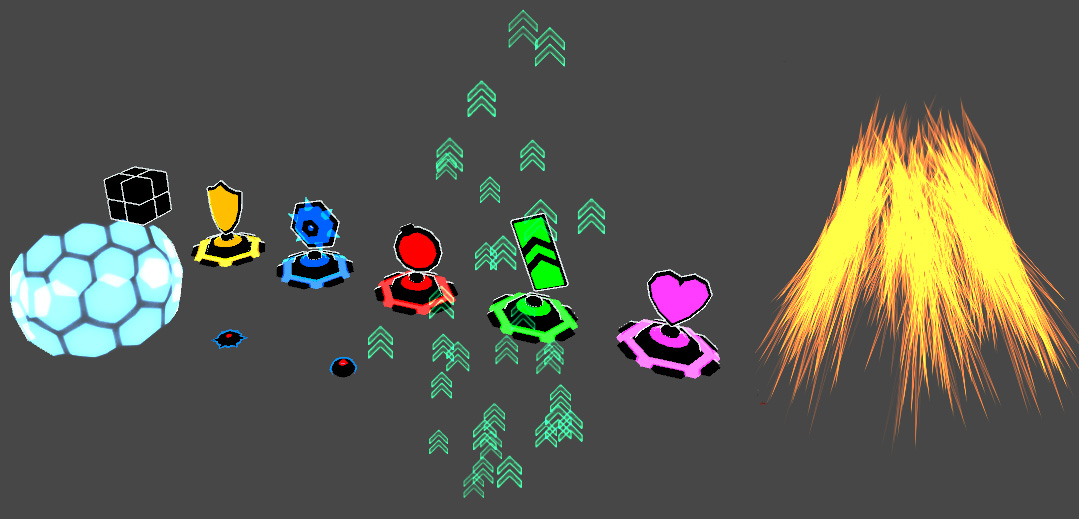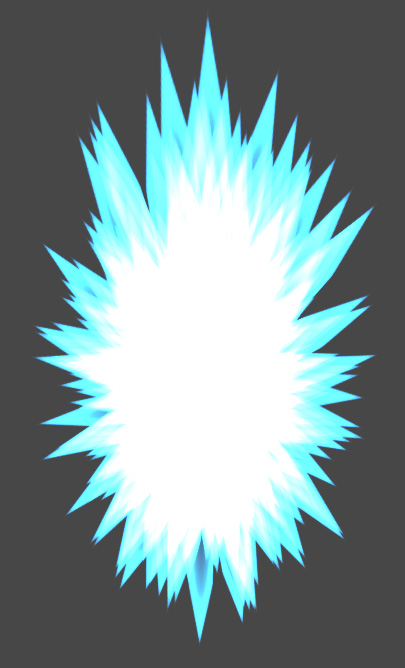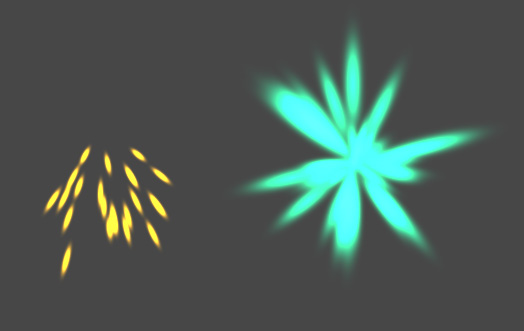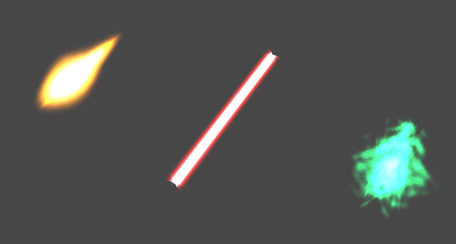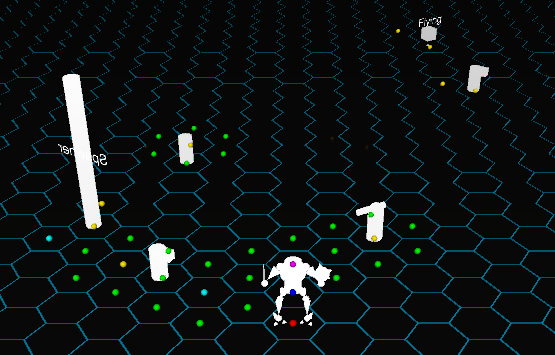After countless tries I finally managed to create something that approaches presentability. This is still just a Photoshop mockup, but it demonstrates where I am trying to go.
I will add a little box to the bottom right for the turn counter and then think about adding a minimap somewhere at the top right (maybe move the sidebar down to have more space). The energy bar at the left side will get evenly spaced segments (that disappear one by one when hit) or a big one (that just shrinks). I prefer the first option. Also I might make it smaller. The color of the outline is the same as the player character’s outline, but I might change them both.
The hexagons at the bottom and the right will get little icons for the different weapons and items, with the other weapons resp. item count in the small boxes below.
I would show you my failed attempts but thankfully, I mean regrettably, I don’t have anything besides pencil sketches and my memories of these tragedies.
